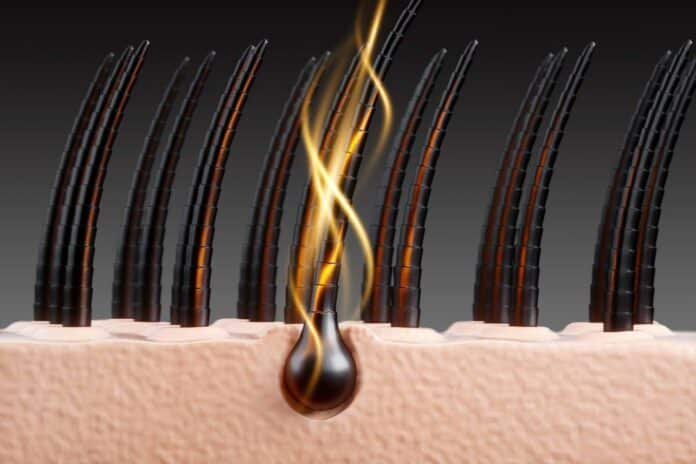In the context of human skin engineering, hair could initially appear unnecessary. Hair follicles, on the other hand, are very significant because they contain stem cells that aid in skin healing and secrete sweat, which helps control body temperature.
Hair follicles are crucial in dermatological testing because they serve as a portal for topical medications and cosmetics. But these days, synthetic skin tissues devoid of hair follicles are used for preliminary safety testing.
Modern skin models are currently rather basic. Adding hair follicles to them could increase their complexity and reveal more about the interactions between topical treatments and the skin.
In a recent breakthrough, scientists at Rensselaer Polytechnic Institute have successfully 3D printed hair follicles in human skin tissue grown in a lab. This is the first time scientists have used this technology to create hair follicles. Moreover, the study could pave the way toward regenerative medicine and drug testing applications.
This work proves that 3D-bioprinting may manufacture hair follicle structures with extreme precision and reproducibility. This automated procedure is required to enable skin biomanufacturing in the future.
The researchers used customized 3D printing methods for printing at the cellular level to build their follicle-bearing skin.
First, the scientists culture and expand skin and follicle cell samples in the laboratory until they have enough printed cells. Next, to make the “bio-ink” that the printer uses, scientists combine several cell types with proteins and other substances. The printer creates channels for the hair cells to be deposited layer by layer, building the skin layer by layer using an incredibly thin needle to deposit the bio-ink. Mirroring the follicular structure found in actual skin, the skin cells eventually migrate to these channels surrounding the hair cells.
Shekhar Garde, Ph.D., dean of Rensselaer’s School of Engineering, said, “Dr. Karande’s work is a great example of advances made by RPI researchers at the interface of engineering and life sciences with impact on human health. Bringing multichannel 3-D printing to the biological realm opens exciting opportunities that would have been hard to imagine in the past.”
These tissues have a lifespan of two to three weeks, which is not enough time for hair shafts to develop. Future study by the team hopes to prolong that duration, enabling the hair follicle to mature even more and opening the door for their application in skin grafts and drug testing.
Journal Reference:
- Carolina Motter Cataino, Desiree Cigaran Schuck, Lexi Dechiario et al. Incorporation of hair follicles in 3D bioprinted models of human skin. Science Advances. DOI: 10.1126/sciadv.adg0297
